WILD FRIENDS
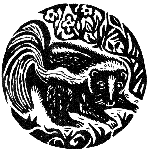
What a thrill it is to have a wild animal or bird come and hesitatingly eat out of your hand! Perhaps you would not choose to have this experience with a skunk, but suppose one chose youas a friend.
Let us assume that you are staying at a cabin in the woods during a summer vacation. You notice that a beautiful shiny black skunk with a neat white stripe down his back comes regularly at dusk to visit the garbage pail, attracted by its enticing smells. At first you observe through the window, but soon you try standing on the porch (with the door open for quick retreat). The skunk may cast a glance in your direction.
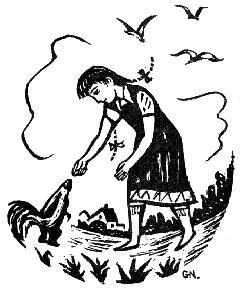
But hunger overcomes caution, and it goes on to seek supper (or is it breakfast if you sleep through the daytime?). A night or two later you gain in boldness and try tossing a piece of bread toward your visitor. The reaction is immediate. He faces you, his body stiffens, and the tail goes up. Danger! But you stay quiet. Very soon that smell of food wins over fear, and he ambles over to sample it.
Now you are caught. Soon you are on the ground to throw the tid-bit. Gradually you toss it less far, so that Mr. Skunk has to walk closer to you. Finally the day comes when you hold out the food and your friend takes it from your hand. What a proud event that is! Soon you are seeking ways to bring skunks into the conversation, just so that you can tell about having wild skunks eat out of your hand.
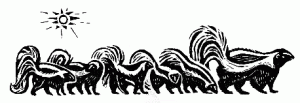
But perhaps you are due for another surprise.
Some evening your friend may appear followed by her family, trailing 5 to 7 baby skunks, in single file, waddling just like their mother. By the time they are old enough to leave the den they have scent-making facilities, so treat them also with respect.
REQUIREMENTS OF FRIENDSHIP
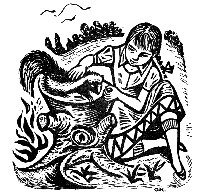
Experiences like these take time and effort to achieve. They are not the same as feeding squirrels in city parks, or animals at state camp sites. Where birds or animals become regularly exposed to many people, individualsbecome partially domesticated and learn that people are an easy source of food.
In the above skunk illustration, you, as an individual, achieved a special relationship with a single wild animal. We often refer to this as “taming” the animal. But is this really what happened?
To gain this state of friendship and respect with Mrs. Skunk, certain things had to happen to you. First, you had to want to have it. Second, you were willing to work at it, patiently. Third, you had to learn by trial and error, for example, that sudden moves scared her. Perhaps you found it necessary to overcome your temptation to slap a biting mosquito!
TAMING ONESELF
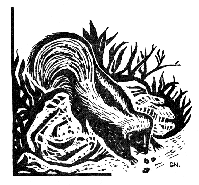
If we put these together, does it not mean that actually you have been tamed by the skunk? This seems to be a more accurate way to state it, for the person has made more effort, and been more changed, than the animal.
Unfortunately this word “skunk” is sometimes used to describe other people. If you know such a person, what would happen if you tried “taming yourself” toward him? You would have to want to. You would have to work patiently at it. And you would have to try different approaches, some of which would not work. For our relationships with humans we use such words as: “liking,” “respect for,” “seeing some good in” and “love.” But to truly apply these words, is it not a matter of “taming ourselves”?
And, finally, to carry this idea one step further—in our relationship with God, do we not need to work at taming ourselves before we are ready for His ever-available help and friendship?
